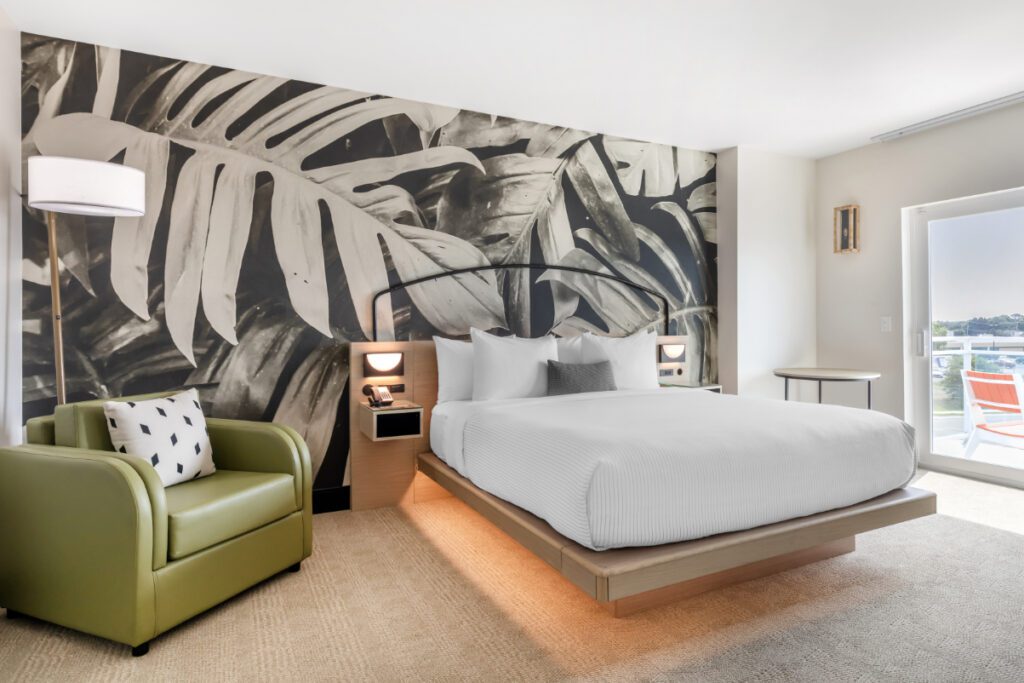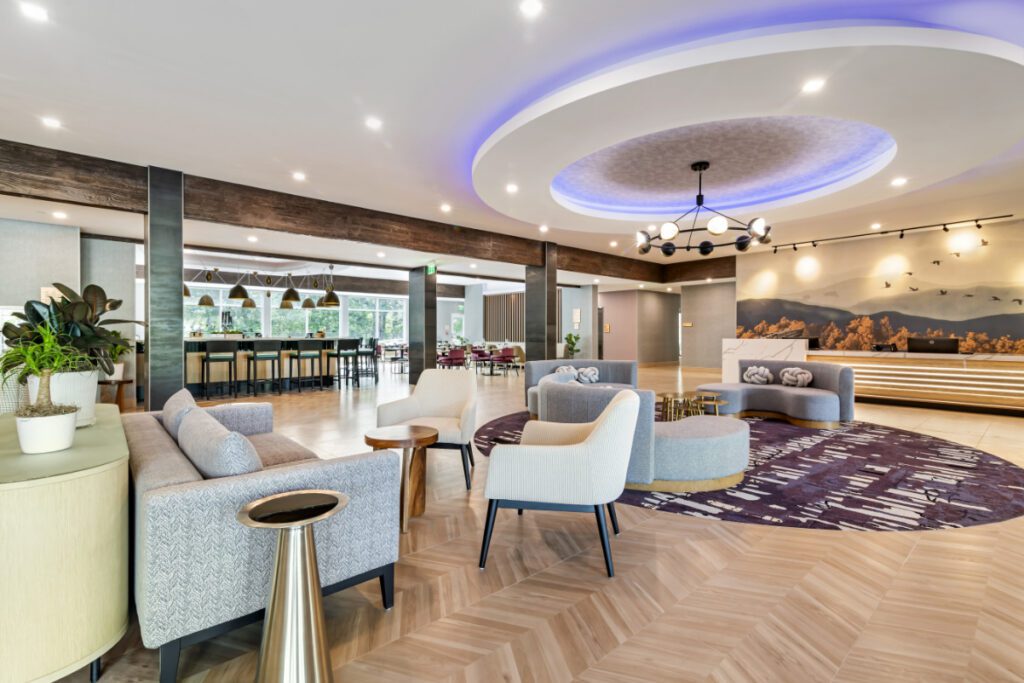Choice Hotels began to push upmarket when it debuted the Cambria brand in 2005. The hotel franchisor lacked upscale expertise, as it had been best known for midscale brands, such as Quality Inn and Comfort Inn, and economy brands, like Rodeway Inn.
Today, 74 Cambrias are open, with 62 in the pipeline. “About 25% of the brand opened in the past two years,” said Indy Adenaw, a senior vice president at Choice Hotels.
Cambria stumbled at first, and the brand’s recent traction speaks to broader hotel trends.
The Initial Stumble
Cambria launched as an all-suites brand for all new construction, partly to differentiate it as a premium product. Yet this design wasn’t popular. The first hotel opened in Boise, Idaho, in 2007, and developers’ uptake after that was slow.
One reason: The brand’s target audience was young, higher-income urban professionals, and they were easiest to attract in big cities.
However, big city developers found it relatively more difficult to build hotels with suites 25% larger than average rooms. They gravitated instead to other brands with a traditional mix of room formats.
Smaller Rooms, Bigger Profits
Fast-forward to 2014, and Cambria got a makeover to make it more palatable to guests. Out went the one-size-fits-all approach, in came a mix of room types.
Lobbies were redesigned to make the bar the focal point and to add more local influences to the decor. For music, the brand swapped Top 40 for an indie sound.
In the guest rooms, bathroom vanities became larger and more “spa-like” in response to focus group research. Nightstands got ample power outlets. However, other parts of the room received a minimalist look, as the brand sought a sweet spot between guest satisfaction and operational efficiency.

Making the Brand More Adaptable for Developers
Choice Hotels heard from developers that getting banks to finance new-construction projects was harder for Cambria than its rival brands.
So the hotel group created a design that let developers take existing hotels, reflag them, and renovate them under a new brand.
Developers found it easier to get a bank loan for a building that already exists.
To perfect this conversion concept, Choice Hotels supported hotel financing. Between 2017 and 2021, it deployed over $400 million in capital to open Cambrias in several markets.
Today, Choice Hotels owns seven Cambrias, even though it is otherwise an asset-light company at its core. Executives see deploying a mix of joint venture investing, some small mezzanine lending, and self-developing of assets as enabling them to be faster and more hands-on in perfecting brands.
The new conversion concept has gained traction. Several developers signed on for projects in urban areas that are magnets for Cambria’s target customers. One reused a landmark office building in Dallas to create a Cambria. Rooftop bars were often replaced with outdoor pools.

Expanding Beyond Big Cities
After cracking top urban markets, Choice Hotels set its sights on bringing Cambrias to secondary and leisure markets, and in 2021, it created a new design to appeal to developers there.
Because these markets typically can’t command the high room rates of major cities, Choice adjusted aspects of the design to make it more cost-effective to create and run.
For instance, it shrunk the kitchen and menu by a third to reduce the number of staff needed to operate it.
“In the secondary markets, guests may consume food and beverage at our hotels differently than in major cities,” Adenaw said. “Some people may be eating smaller plates and perhaps using the hotel restaurants as a pre-dinner meeting point or an after-dinner point. We have to think through how that affects our offering.”
The company has said that Cambria is driving comparable revenue per available room in the U.S. compared to competitor brands such as Courtyard by Marriott, Aloft, Hyatt, Place, Hotel Indigo, AC Hotels, and Hilton Garden Inn.
Prioritizing Crucial Amenities
Choice Hotels is trying to make the various models of Cambria more efficient by being more selectively design-forward.
“To say that everything in a hotel has to be a certain premium grade doesn’t make sense to the customer, and it doesn’t make sense to the developer,” Adenaw said. “Real people don’t stay confined to marketer’s categories for them. We’ve all seen somebody carrying a Louis Vuitton bag when shopping in, say, Coach.”
Choice Hotels wants to prioritize customers’ most important points and make the experience feel premium without overdoing other amenities that guests care less about.
“In Cambria, we’re maniacally focused on the bathroom experience because it’s particularly important for upscale customers,” Adenaw said.
The goal is to strike the right trade-off between offering upscale amenities and not facing runaway operational costs.
Looking Ahead
“You’ve seen a number of different chains try and figure out really how to anchor down on both the customer type as well as the owner type,” Adenaw said. “That’s because all hotel operators are trying to figure out how to get that balance between the most rate you can charge and the least cost you need to support that.”
What Choice Hotels seems proudest of now is that developers are picking Cambria for up-and-coming districts.
“We’ve shown our ability to get into markets as they’re starting to emerge,” Adenaw said. “Our newest hotel in Denver is in the RiNo [River North] art district, which is now booming. Same thing with our openings this year in Lake Placid [New York] and in Copper Mountain [Colorado].”
Accommodations Sector Stock Index Performance Year-to-Date
What am I looking at? The performance of hotels and short-term rental sector stocks within the ST200. The index includes companies publicly traded across global markets, including international and regional hotel brands, hotel REITs, hotel management companies, alternative accommodations, and timeshares.
The Skift Travel 200 (ST200) combines the financial performance of nearly 200 travel companies worth more than a trillion dollars into a single number. See more hotels and short-term rental financial sector performance.
Read the full methodology behind the Skift Travel 200.

